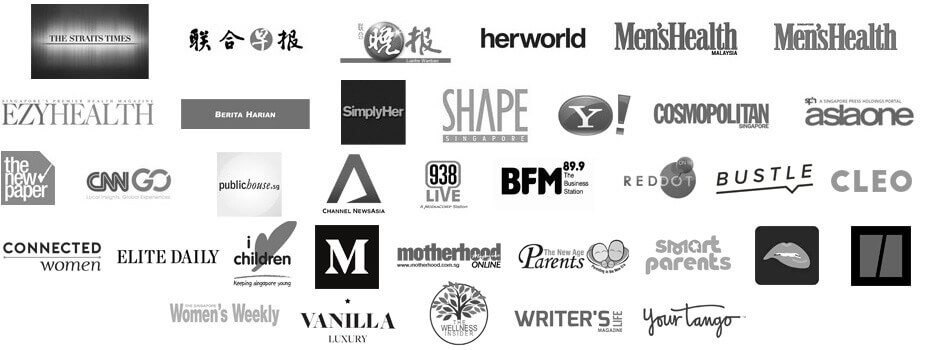 This article was first published for PinkLifestyle.com here.
This article was first published for PinkLifestyle.com here.
When it comes to making our lives more sustainable and reducing our impact on the environment, many of us forget about the sustainability of our sex lives. As eco sexuality has been becoming an increasingly discussed topic, we need to take some time to research and discuss the sustainability of the sex toys we are using, as well as their impact on our health.
Here’s the problem – as sex toys are still classified as novelty items not regulated by the U.S. Food and Drug Administration (FDA). This means that materials considered to be unsafe in other products, such as medical equipment or menstrual cups, can still be used in sex toys without breaching the law.
Because of that, we often need to do the research on which sex toys are made from body safe materials that also don’t harm the environment or ourselves.
The hazards of unsafe and unsustainable materials
We need to be very careful about the materials we choose for our sex toys – because they come into contact with the most sensitive parts of our body which absorbs these materials.
Avoid jelly or other soft material sex toys. These contain a high concentration of phthalates, which are banned in most western countries, thoroughly inspected and regulated products such as children’s toys. However, they’re still frequently used in jelly sex toys as they make the material softer at a low financial cost.

An ever-growing field of research has linked phthalate exposure to asthma, attention-deficit hyperactivity disorder, breast cancer, obesity and type II diabetes, low IQ, neurodevelopmental issues, behavioural issues, autism spectrum disorders, altered reproductive development and male fertility issues. When these materials are released into the environment, they can also have similar effects on other species.
Soft sex toys are also very porous, which makes them difficult to clean properly. This is causing bacteria to gather in these pores, possibly leading to infection and other health problems.
Materials to choose for eco-friendly sex toys
Knowing about what you’ll want to avoid, what are some of the best body safe materials to bet on for sex toys? There are several different alternatives – some very similar to the typical sex toys you know and some a little more innovative.
1) Medical grade silicone
Silicone is the most common material used for sex toys that are body safe and less environmentally damaging. It’s free of phthalates, non-porous and very easy to clean. This makes it an excellent body safe option that’s also hypoallergenic.
Compared to food grade silicone, medical grade silicone is more durable and resistant. However, as medical-grade silicone is more heavily monitored, it is also sometimes tested on animals – something to consider if animal welfare is a concern of yours.
Silicone is a heavily discussed material in the sustainability community and has its supporters and its opponents. Benefits include unmatched durability, natural origin (from silica, found in sand) and potential to be recycled. But silicone takes an extremely long time to decompose, the process of extracting silica is environmentally taxing and the recycling process for silicone is complicated at best.
Nevertheless, silicone is a good starting point for anyone looking for sex toys made from body safe materials, that are also more eco-friendly.

2) Glass
Glass has many of the same characteristics as silicone regarding your health – it’s easy to clean, non-porous and free of phthalates. You don’t have to worry about the toy shattering and injuring you, as they’re made from highly durable tempered glass which can withstand any of your eco sexuality desires.
An eco-friendly sex toy material, glass is an indefinitely recyclable material as there’s no limit to how many times it can go through the recycling process. This is a big advantage in a world where our landfills are filling up and most sex toys are considered hazardous waste!
3) Wood
Besides being free of all the nasty chemicals, wooden sex toys are completely biodegradable in the landfill, making them perhaps even more eco-friendly than glass. There’s no need to worry about their safety as they’re treated with a durable finish to prevent any splintering. Just make sure that any treatment of the wood is also body safe and sustainable. If the toys come from a sustainable manufacturer, this will likely be the case – but it never hurts to double check.
4) Ceramic/ Stainless Steel
Aside from silicone, glass and wood, the other options you may want to consider when choosing a body safe material for your eco-friendly sex toys include ceramic or stainless steel. As these materials share many of the pros and cons of the above alternatives, we won’t go into too much detail, but make sure to check them out too before making a decision.
Powering eco-friendly sex toys
It’s not just about the material the surface of the product is made from – we also need to think about how we’re powering the toy. Single-use batteries aren’t a very good choice, but there are many different options – all of which fall into the category of rechargeable.
- Opt for rechargeable batteries as this saves you the struggle of looking for sex toys that have a more sustainable system.
- Look for toys in the market that have a built-in battery that can be recharged.
- Solar powered – In some of these, it’s even powered by solar energy! The toy can be plugged into a small solar panel or your windowsill.
As you can see, the world of eco-friendly sex toys and eco sexuality is much more exciting than you would have thought!
Explore the market for an alternative that will be right for you and don’t forget that the most sustainable toys are those that will last you a very long time.
Sources:
Because You Asked: What Is Silicone And How “Green” Is It? (2017, June 13). Recyclebank. https://livegreen.recyclebank.com/column/because-you-asked/what-is-silicone-and-how-green-is-it
Fleming, A. (2020, September 23). ‘Environmentalists are horny right now’: how to make your sex life more eco-friendly. The Guardian. https://www.theguardian.com/lifeandstyle/2019/apr/02/environmentalists-are-horny-right-now-how-to-make-your-sex-life-more-eco-friendly
Glass Sustainability & the Environment – Glass Alliance Europe. (2021). Glass Alliance Europe. https://www.glassallianceeurope.eu/en/environment
J. (2015, June 5). How sustainable is wood? Inhabitat – Green Design, Innovation, Architecture, Green Building. https://inhabitat.com/how-sustainable-is-wood/
J., R. (2019, November 28). Errly Bird Breaks Down Silicone Grades and… HotBox Magazine. https://thehotboxmagazine.com/errly-bird-breaks-down-medical-grade-silicone/
N. (2020, November 27). Why Your Period Might Not Be Vegan. Natracare. https://www.natracare.com/blog/why-your-period-might-not-be-vegan/
O. (2015, March 25). Food-grade Vs Medical-grade silicone. Menstrual Cups. https://menstrualcups.wordpress.com/2015/03/24/food-grade-vs-medical-grade-silicone/
Przybylińska, P. A., & Wyszkowski, M. ł. (2016). Environmental contamination with phthalates and its impact on living organisms. Ecological Chemistry and Engineering S, 23(2), 347–356. https://doi.org/10.1515/eces-2016-0024
Rigby, J. (2021, January 2). Are Silicone Products Sustaible and Eco-Friendly? Let’s Find Out. MindsetEco. https://mindseteco.co/is-silicone-environmentally-friendly/
Sin, J. (2020, July 7). A guide to sustainable sex toys. NOW Magazine. https://nowtoronto.com/lifestyle/love-and-sex/best-eco-friendly-sex-toys
Thinx, A. (2018, November 1). An Eco-Friendly Guide to Sex Toys. Thinx | Thinx (BTWN) | Speax. https://www.shethinx.com/blogs/thinx-piece/eco-friendly-sustainable-sex-toys
Westervelt, A. (2017, September 20). Phthalates are everywhere, and the health risks are worrying. How bad are they really? The Guardian. https://www.theguardian.com/lifeandstyle/2015/feb/10/phthalates-plastics-chemicals-research-analysis
About Dr. Martha Tara Lee
 Surrounded by friends who were sexually inhibited and struck by dire lack of positive conversations around sex and sexuality in Singapore, Dr. Martha Tara Lee set out to make a positive difference in embarking on her doctorate in human sexuality before launching Eros Coaching in 2009. Today, she remains dedicated to working with individuals and couples who wish to lead self-actualised and pleasure-filled lives.
Surrounded by friends who were sexually inhibited and struck by dire lack of positive conversations around sex and sexuality in Singapore, Dr. Martha Tara Lee set out to make a positive difference in embarking on her doctorate in human sexuality before launching Eros Coaching in 2009. Today, she remains dedicated to working with individuals and couples who wish to lead self-actualised and pleasure-filled lives.
She also holds certificates in counselling, coaching and sex therapy, and her fourth degree – a Masters in Counselling in May 2018. In practice for more than 10 years, she is the only certified sexuality educator and certified sexuality educator supervisor by the American Association of Sexuality Educators, Counselors and Therapists (AASECT) in Singapore. She is also a Red Tent Women’s Circles Facilitator from Star of Ishtar.
Often cited in the media, Dr. Lee is the appointed Resident Sexologist for PinkLifestyle.com; as well appointed sex expert for Men’s Health Singapore, and Men’s Health Malaysia. She was recognised as one of ‘Top 50 Inspiring Women Under 40′ by Her World in July 2010, and one of ‘Top 100 Inspiring Women’ by CozyCot in March 2011. She has published four books: Love, Sex and Everything In-Between, Orgasmic Yoga, From Princess to Queen and {Un}Inhibited.
Martha works with individuals and couples in private coaching sessions, and conducts her own workshops. She takes prides in making sure all her workshops are also fun, educational, and sex-positive. This comes easily to her because even though she is extremely dedicated and serious about her work, she fundamentally believes that sex is meant to be fun, wonderful, amazing and sacred. As such, this serious light-heartedness has shone through again and again. For her full profile, click here. Email her here.


